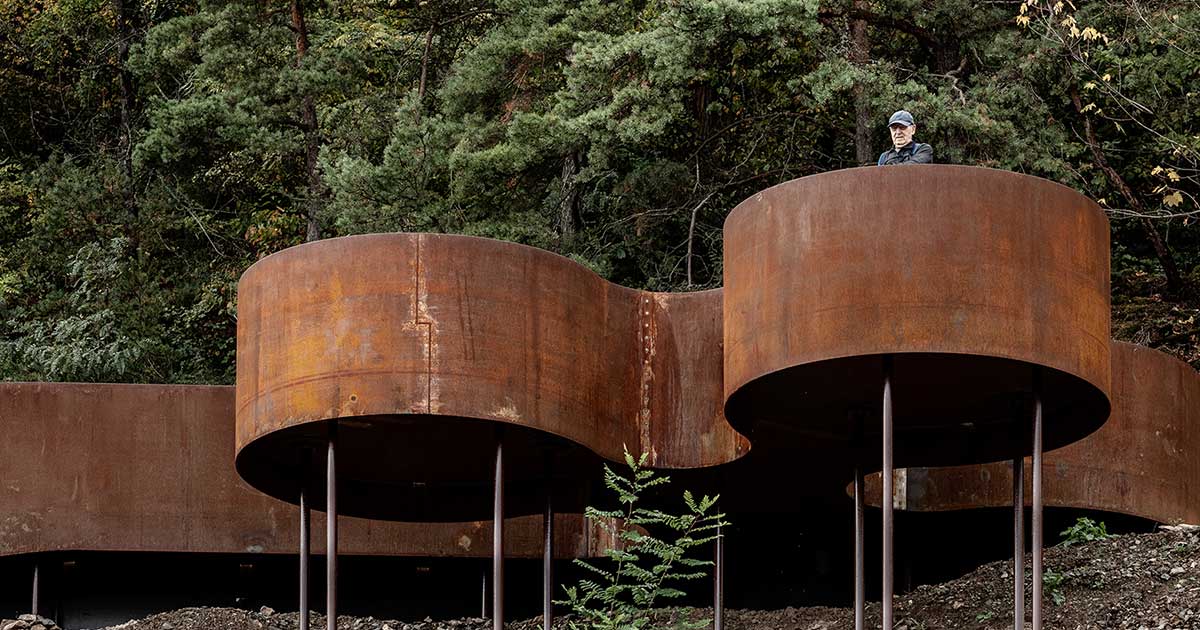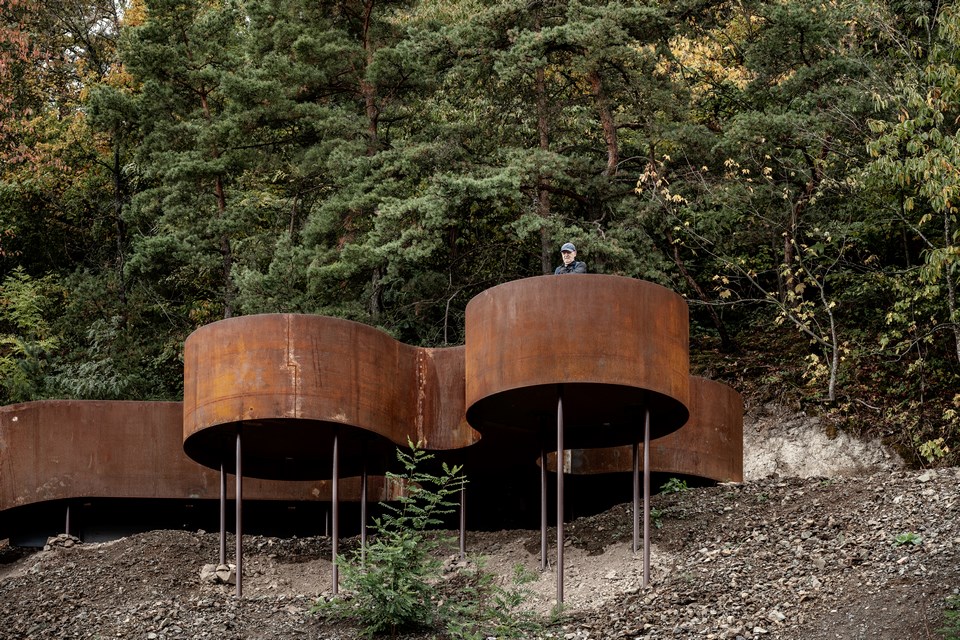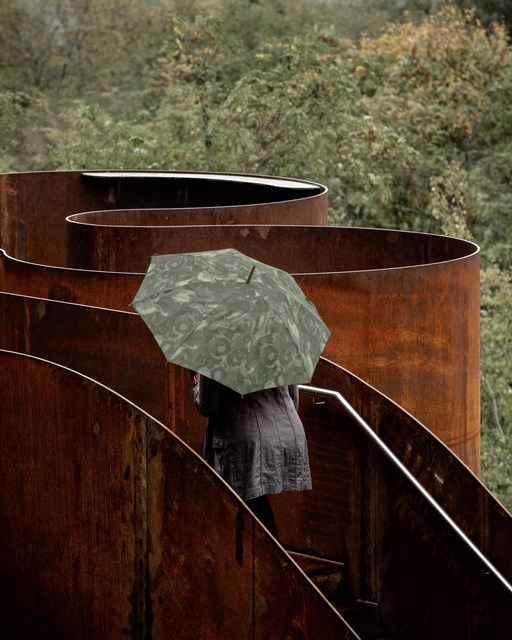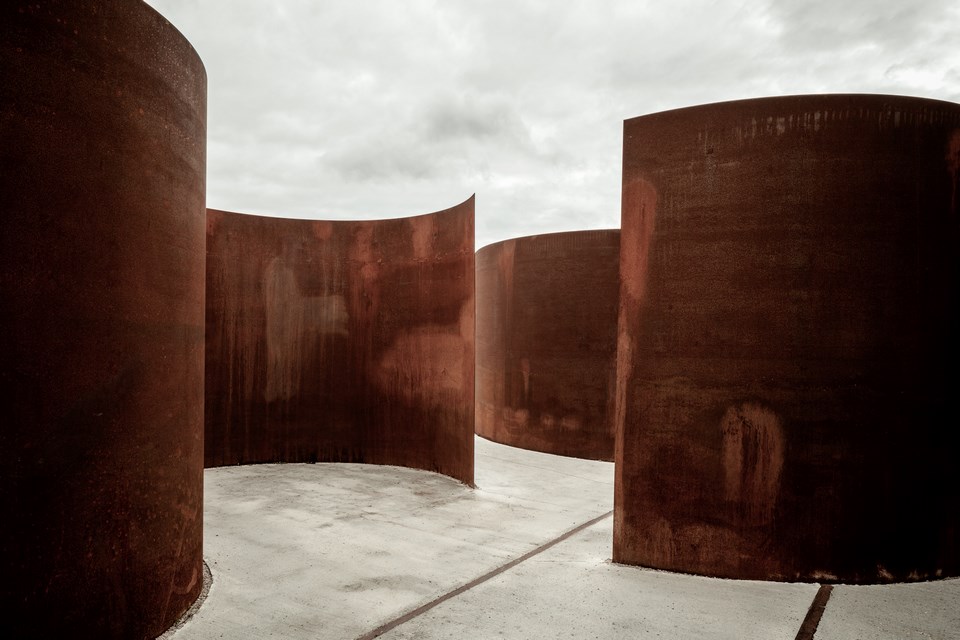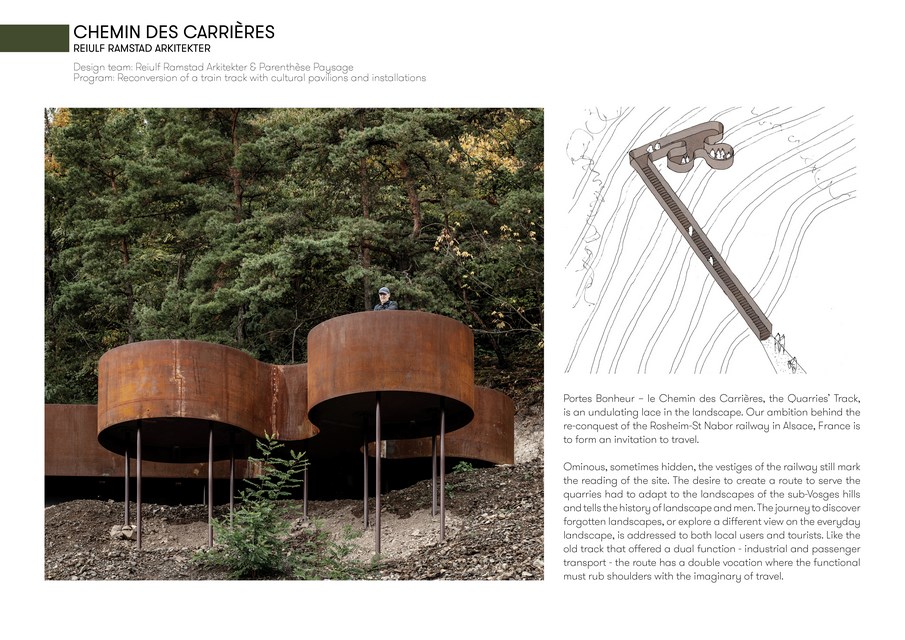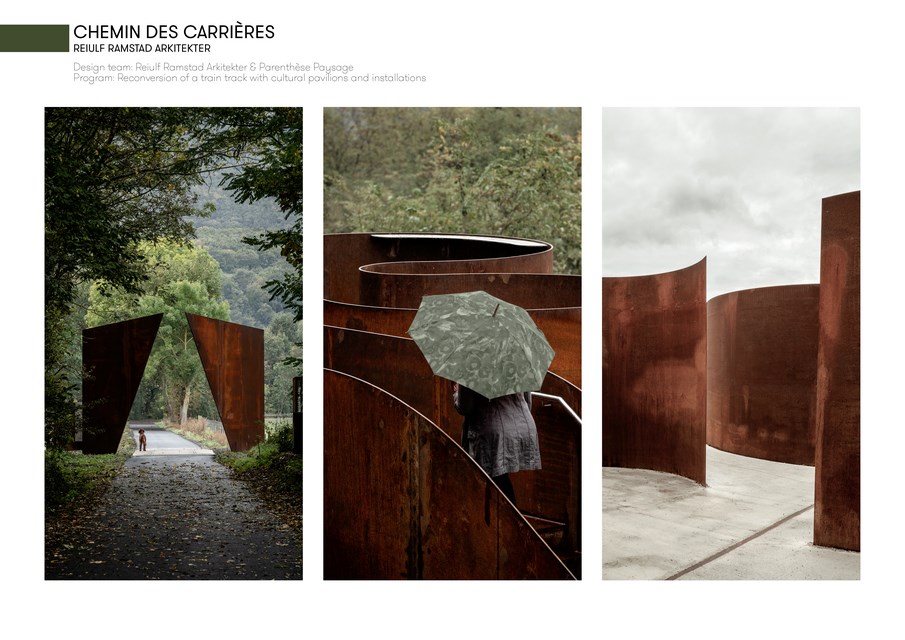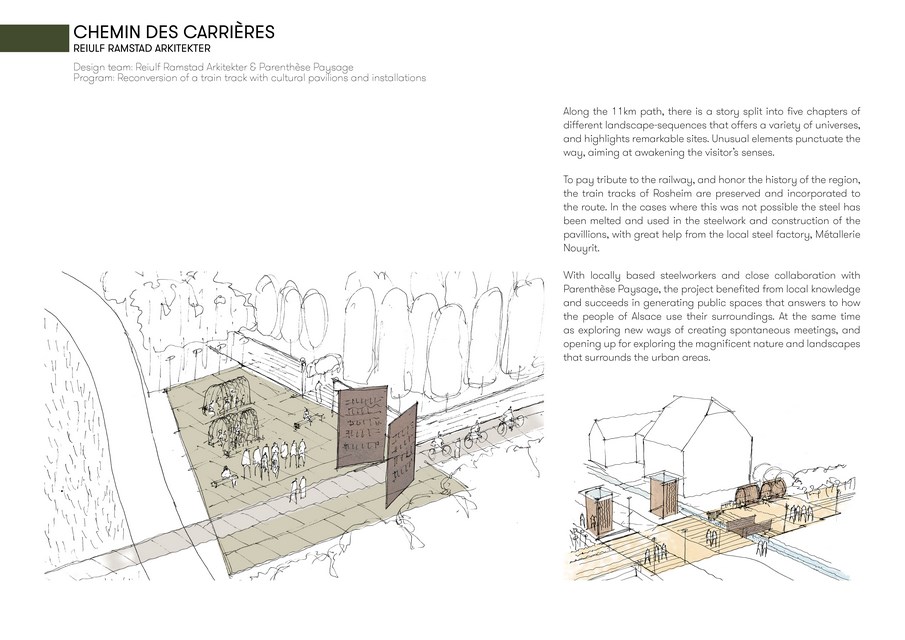Le Chemin des Carrières by Reiulf Ramstad Arkitekter | World Design Awards 2020
Reiulf Ramstad Arkitekter: Second Award of World Design Awards 2020. Chemin des Carrières – the Quarries’ Track – is an undulating lace in the landscape. Our ambition behind the re-conquest of the Rosheim – St. Nabor railway in Alsace, is to form an invitation to travel and explore.
The ominous, and sometimes hidden, vestiges of the railway expresses the nature of the site. The desire to create a route to serve the quarries had to adapt to the landscapes of the sub-Vosges hills, and tells the history of the landscape and of men. The journey to discover forgotten landscapes, and explore a different point of view, is addressed to both locals and tourists. Like the old track that offered a dual function (industrial and passenger transport), the route has a double vocation where the functional must rub shoulders with the imaginary of traveling.
Along the 11km path, there is a story split into five chapters of different landscape-sequences that offers a variety of universes, and highlights remarkable sites. Unusual elements punctuate the way, aiming at awakening the visitor’s senses.
Rosheim tells the story of the past. The pavilion has the character of a labyrinth and plays with irregular concave and convex interior. The train tracks are conserved in the area and the sculpture is opened and closed to specific views of the surrounding landscape.
Boersch tells the story of water. The river is a dynamic element in the landscape, running to the ocean. In Boersch we enlarge the riverbed and build a large open space amphitheatre to access the water, and make room for meatings between people.
Leonardsau tells the story of the land. After a long green tunnel, two large corten steel plates amplify the opening effect at the end of the forest corridor to the open up to the landscape.
Ottrott tells the story of travel. As a former train station, the stop materializes the history of the railway and highlights the presence of the quarry track’s heritage.
Saint-Nabor tells the story of luck. At one of the highest platforms in the area, created by machine, the travellers will discover a spectacular place: a corten steel structure offering a wide view of the valley of Rosheim and the plains of Alsace.
Corten steel is used in the project as a homage to the railway. To honour the history of the region, the train tracks of Rosheim are preserved and incorporated to the new route. As a way of financing the project, parts of the track was sold to the local steel factory; Métallerie Nouyrit. They melted the steel and used it in the construction. The material extends the lifecycle of the pavilions, compared to regular steel, and requires minimal upkeep.
With locally based steel workers and close collaboration with Parenthèse Paysage, the project benefited from local knowledge and succeeds in generating public spaces that answers to how the people of Alsace use their surroundings. On the opening of Le Chemin des Carrieres, the community gathered to celebrate the new attractions. The project seeks to tie the 5 towns together and generate new relations and public spaces that can be used by both locals and tourists. A part of the idea is that architecture can help reverse the trend of urbanization, and rather make rural areas attractive by emphasizing their inherent qualities and opening up for exploring the magnificent nature and landscapes that surrounds these urban areas.

Firm: Reiulf Ramstad Arkitekter RAA
Architect: Reiulf Ramstad
Category: Landscape Design Built
Project Location: Rosheim, France
Team: Reiulf Ramstad Arkitekter
Country: Norway
Photography ©Credit: 11h45
![]() RRA is a multidisciplinary architecture firm with extensive architectural expertise and experience. We are one of a few architecture firms in Norway that delivers a broad range of unique and varied building projects. Our projects are geographically diverse within various contextual settings from urban areas to dramatic uncultivated landscapes. We have a large spectrum of innovative projects in our portfolio in terms of scale and context, budget and functionality. Most of our projects are the result of winning either a restricted or an open competitive tender process. This is currently our main source of business acquisition.
RRA is a multidisciplinary architecture firm with extensive architectural expertise and experience. We are one of a few architecture firms in Norway that delivers a broad range of unique and varied building projects. Our projects are geographically diverse within various contextual settings from urban areas to dramatic uncultivated landscapes. We have a large spectrum of innovative projects in our portfolio in terms of scale and context, budget and functionality. Most of our projects are the result of winning either a restricted or an open competitive tender process. This is currently our main source of business acquisition.



